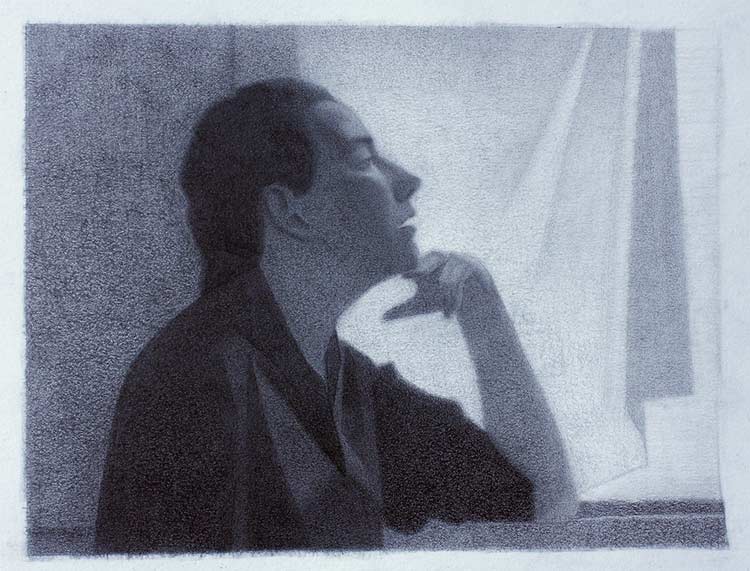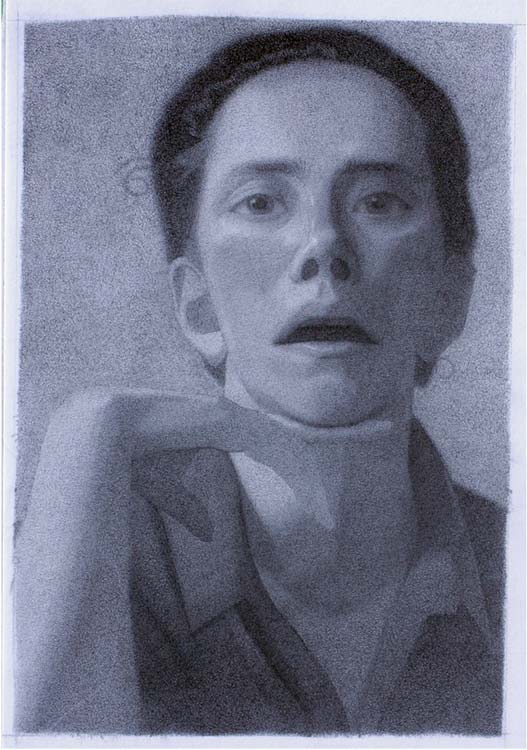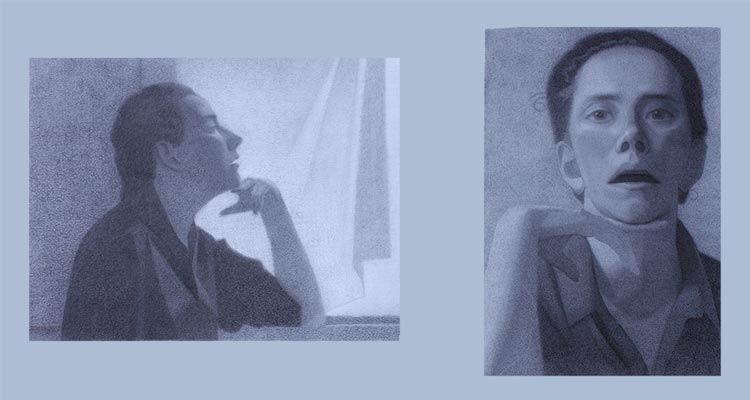This is the preliminary sketch for my next Selfie. I wanted to push myself and create composed image with a character, costume, scene and mood. I wanted to push beyond mere likeness of a sitter on a static background.
Body: The Profile and the Public Self
For this picture I wanted to create a dialogue with the historic practice of the profile portrait from the early Renaissance . The profile was the preferred mode for representing a Nobel Lady (to read more on this you can read Understanding Madame X). Because she looks away from the viewer we don’t get a sense of her internal world and any judgement of her is base slowly on appearance. Representing the wrong expression was risky because it could call into question the sitters virtue. Best to avoid the lady’s thoughts all together.
The profile also suggests her nobel lineage. From this angle we can most easily read her facial features and , for example, recognize her nose that resembles that of some important Duke. Underscoring her nobility, she would be dressed in her finest and positioned by a window overlooking the land her family owns.

What got me excited in all of this was this idea of presenting a public self. What is my identity within the society? I’m sort of tempted to leave it at that. I spent a lot of time thinking about the pose for this image and hopefully that expresses how I see my role as an artist.
Another key element in this drawing was expressing a sense of light. In those early profile portraits the treatment was flat or graphic. Although the subject was often in front of a window they were shown in full light. For my profile I wanted to signal our evolution as a society by showing my subject in natural light. This meant showing the sitter in shadow set against the bright light of the window.
Mind: A Secound Image in the Mirror
To do draw yourself in profile you need two mirrors. You face the first mirror in profile and you angle the secound so that you look into it to see the reflection of the first mirror. Looking into that secound mirror you also see yourself looking directly into the mirror. Working on #Body I couldn’t stop noticing the secound image of myself in the mirror. I was struck by how utterly different it was to the carefully construction of public persona I was trying to capture with #Body.

In the secound image #Mind the sitter looks directly at the viewer. It’s extremely psychological. You can’t help but try and guess her thoughts. The open mouth, that gives the first image a sense of naturalism, comes off as a provocation. Is she about to say something? Even the composition feels more intimate. In the first image the sitter is seen from across the room. Our main attention goes to the ‘thinker’ pose. The secound image crops into the face, positioning the viewer only inches from the sitter. All of this intimacy invites the viewer into the sitter’s internal world.
Two Drawings About Truth
#Body #Mind are two completely different images. Yet they capture the exact same person, in the exact same pose, at the exact same time. With this drawing I invite the viewer to consider the complexity of truth. In #Body I build up a very composed image filled with references to art history. In #Mind I present a more candid and psychological image that seems to call into question the authenticity of the more composed image.
My aim isn’t to make the viewer takes sides (#TeamBody or #TeamMind). Instead, I invite the viewer to view the work as an expression of an external and internal self.
Because we all have an internal and external self, I think it’s easier to understand these two conflicting ideas as true. But I challenge my audience to take this idea a step forward. We talk a lot about fake news and how technology allows for the manipulation of images. What I’d like to suggest is that truth is a bug concept that is hard to pin down in any one image. We should always consume images critically. We don’t have to write everything off as fake but we should always be considering how the image could look from a different perspective.

